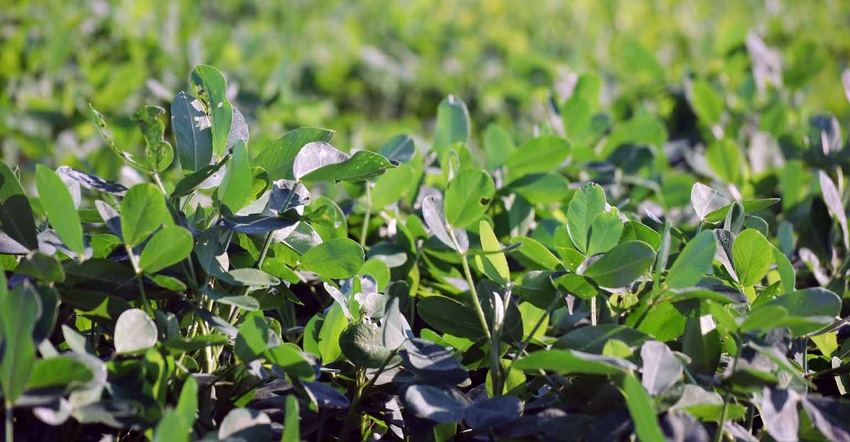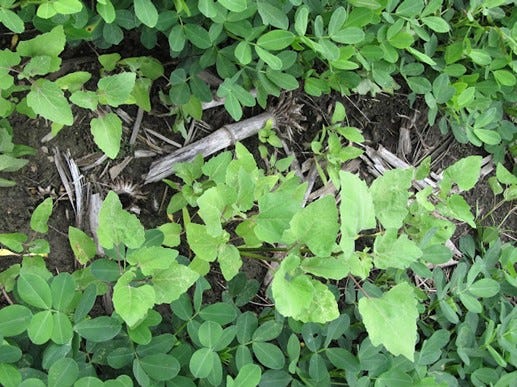April 15, 2022

One of the very few benefits of being an older weed scientist is that I can say, “Remember when this happened or remember that problem?”
When I began my professional weed science life in the late 1980s, cocklebur (Xanthium strumarium) was a very common weed in many row crop fields. It remained so up until the introduction of glyphosate-resistant soybeans in 1996. Most, including me, kind of forgot about it. Over the last few years, I have received numerous inquiries about cocklebur in peanut fields and have even made a few interesting farm visits.
I am not smart enough to know for sure what going on here other than the fact that Mother Nature will eventually always win and that the most frequently used peanut herbicide, Valor (flumioxazin), is not very consistent/effective on cocklebur. Valor is used on about 65% of the total U.S. peanut acres (74% in GA). Other residual peanut herbicides such as Anthem Flex (pyroxasulfone + carfentrazone), Dual Magnum (S-metolachlor), Warrant (acetochlor), Outlook (dimethenamid-P), and Zidua (pyroxasulfone) are also not very effective.
Here are a few fun facts about cocklebur:
Cocklebur is native to the Mediterranean region and was likely brought into the U.S. with the first shipments of livestock that accompanied early settlers.
Depending upon environmental conditions and the date of emergence, a single cocklebur plant can produce anywhere from 80 to 5,400 burs.
Each bur contains 2 seeds, 1 seed can germinate immediately while the other seed remains dormant.
Cocklebur plants that develop from seed buried at depths greater than 6 inches are less likely to emerge.
Seed in burs that remain on the soil surface have difficultly germinating because the bur prickles prevent optimum seed to soil contact.
The first documented case of herbicide resistance in a U.S. cocklebur population occurred in 1988 (cotton, MSMA/DSMA, AL).
From previous peanut tillage/row spacing research conducted by my weed science colleagues in Florida, there was not much difference in cocklebur control between conventional (moldboard plow + harrow) and strip-tillage (30% wheat cover crop residue) systems when averaged over herbicides and row patterns. In strip-tillage systems, twin rows provided a 10-12% increase in cocklebur control but not in conventional tillage systems.

Cocklebur in a South Georgia peanut field. Credit: Eric Prostko
Peanut herbicides that provide very effective PRE and POST control of cocklebur include Cadre (imazapic), Pursuit (imazethapyr), and Strongarm (diclosulam). These three herbicides are ALS-inhibiting herbicides (WSSA/HRAC MOA #2). Cocklebur resistance to this MOA has been documented in 12 states including several in the southern region (AR, MD, MO, MS, NC, OK, TN). Other peanut herbicides that provide only POST control (i.e. no residual) include 2,4-DB, Basagran (bentazon), Cobra (lactofen), Gramoxone (paraquat), Storm (acifluorfen + bentazon), and Ultra Blazer (acifluorfen).
Recently, cocklebur has been one of those weeds that randomly pops up from time to time and causes a few headaches. I am not forecasting a rapid explosion of cocklebur in peanut fields. Fortunately, peanut producers have many tools in their toolbox for the control of this weed. Just have to be ready for it.
As always, good weed hunting!
About the Author(s)
You May Also Like






